The Rise of Smartphones with Five Cameras: A Deep Dive
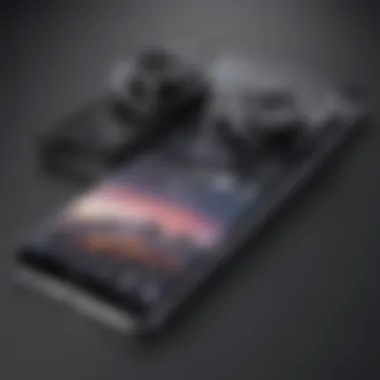
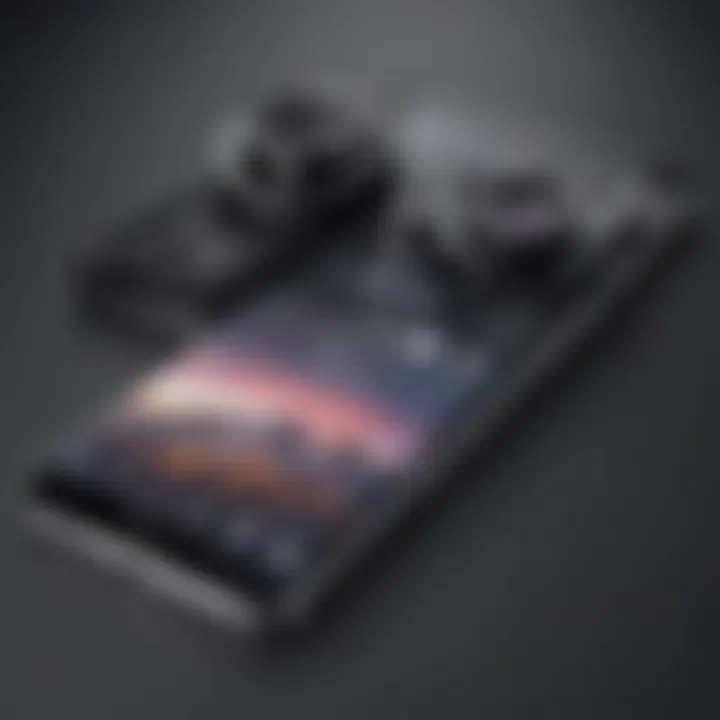
Overview of the Smartphone
Smartphone Intro
The landscape of mobile technology has changed remarkably over the past decade. Initially, cell phones served basic communication purposes. Today, smartphones integrate advanced functionalities, rapidly evolving to include multiple camera systems. This evolution reflects not only technological advancements but also shifting consumer expectations, especially in photography.
Key Features and Specifications
Five-camera smartphones typically distinguish themselves with diverse camera types such as wide-angle, ultra-wide, zoom, portrait, and macro lenses. This setup allows users to capture more information, texture, and perspective in their photographs. They not only enhance photographic capability but also elevate user experiences by offering various shooting modes and enhanced image quality.
Moreover, beyond the camera setups, these devices boast substantial specifications, including high-resolution displays, powerful processors, and extensive storage options. This technical foundation supports the sophisticated camera systems, facilitating seamless functionality.
Pricing and Availability
Smartphones with five cameras range in price significantly. Premium devices often exceed several hundred dollars, reflecting their advanced technology and capabilities. Many brands are also introducing mid-range options, making these sophisticated phones more accessible. Availability generally spans various retailers, both online and in physical stores, catering to diverse geographies and consumer preferences.
In-Depth Review of the Smartphones
Design and Build Quality
Smartphones featuring multiple cameras often emphasize aesthetics alongside functionality. Materials such as glass and metal are common, providing a premium feel. The arrangement of the camera lenses, often on the back, should not only look good but also facilitate effective usability.
Performance and Hardware
Performance is crucial for smartphones with complex camera systems. Powerful chipsets are pivotal, enabling multitasking and enhancing image processing speed. RAM capacity often supports high performance, ensuring smooth operation during demanding tasks.
Software Features and User Interface
The software on these devices is tailored to maximize camera functionality. Features such as AI enhancements for scene detection and editing tools add depth to the user experience. Friendly user interfaces simplify navigating through different camera options, catering to both amateur and professional photographers.
Camera Quality and Imaging Capabilities
When discussing smartphones with five cameras, imaging quality is of utmost importance. Each lens serves a unique function, enhancing versatility. Users can expect incredible detail and clarity across different photographic scenarios, capturing everything from expansive landscapes to intricate close-ups.
"With multiple lenses, the potential for creativity in photography grows exponentially."
Battery Life and Charging
High-performance smartphones, particularly those with multiple camera systems, demand considerable battery power. Manufacturers often incorporate larger batteries to support extended usage without frequent recharges. Fast charging technologies also enhance user convenience, allowing for quick refueling during busy days.
How-To Guides for the Smartphone
Setting Up the Smartphone
Upon acquiring a new smartphone with five cameras, the initial setup process is straightforward. Users typically follow on-screen prompts, connecting to Wi-Fi and signing into their accounts. Ensuring that all software updates are applied is crucial for optimal performance.
Customization Tips and Tricks
Customization enhances the user experience. Adjusting camera settings, choosing preferred modes, and setting up shortcuts can significantly speed up photography workflows. Learning to use manual controls will also help in leveraging the device's full potential.
Boosting Performance and Battery Life
Regularly clearing the cache and uninstalling unused apps are practical steps to optimize performance. Users can enable battery saver modes during peak usage to extend battery life.
Troubleshooting Common Issues
Common issues may include slow performance or camera glitches. A simple restart often resolves these issues, while checking for software updates can prevent bugs.
Exploring Hidden Features
Many smartphones come with features that remain hidden. Users can often explore forums like Reddit or check user manuals to discover tips that enhance their photography experience.
Comparison with Competing Smartphones
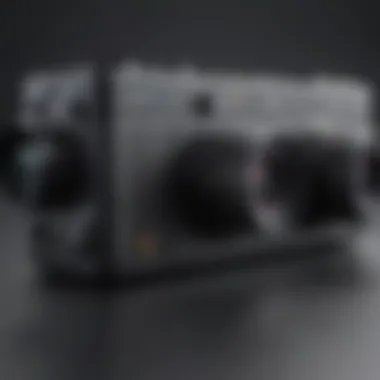
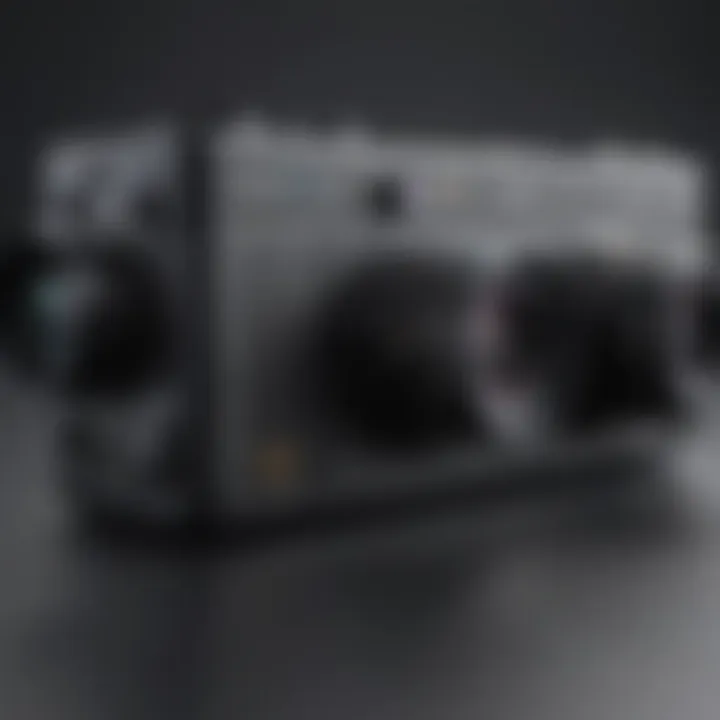
Spec Comparison with Similar Models
When evaluating smartphones with five cameras, it is essential to analyze specifications relative to competing models. Features such as camera quality, battery life, and processing power provide insight into the overall value of the device.
Pros and Cons Relative to Competitors
Every smartphone has its strengths and weaknesses. While some may excel in camera capabilities, others may offer superior battery life or software functionalities. Understanding these distinctions aids in making informed purchasing decisions.
Value for Money Assessment
Ultimately, value for money is subjective. A smartphone's pricing often reflects its capabilities and user experiences. Consumers should weigh their personal needs against available options in the market.
Prologue to Multi-Camera Smartphones
The emergence of multi-camera smartphones marks a significant shift in mobile technology, particularly in the realm of photography. This development has transitioned smartphones from mere communication devices to powerful tools that cater to a diverse range of user preferences and photographer capabilities. Understanding the introduction of multi-camera systems in smartphones is essential to grasp the full impact they have on both consumer behavior and the industry as a whole.
A multi-camera setup generally consists of various types of lenses, each tailored for specific photographic needs. The function of having multiple cameras extends beyond simply capturing photos; it enables the user to achieve effects like depth of field, wide-angle shots, and enhanced low-light performance. These features contribute to improving the overall user experience, allowing for creativity and adaptability in photography.
Moreover, the competition between smartphone manufacturers has intensified. Each brand strives to outdo the other by introducing innovative camera technologies, making it a crucial focal point for marketing strategies. This has led to a race in which companies like Samsung, Apple, and Huawei invest heavily in research and development to refine these multi-camera approaches.
From an engineering perspective, incorporating multiple camera systems poses certain challenges. Issues like software integration, image processing, and sensor alignment must be addressed to ensure seamless functionality. This requires significant investment not only in technology but also in user-interface design to ensure simplicity and ease of use for consumers.
In summary, the importance of multi-camera smartphones lies in their ability to reshape user expectations regarding mobile photography. The progression from single-camera models to versatile, multi-camera smartphones opens a new chapter in how consumers engage with photography in their daily lives. Understanding these developments allows for a more nuanced view of technology's role in shaping creativity and communication.
Technological Advancements in Camera Systems
The topic of technological advancements in camera systems is crucial in understanding the evolution of smartphones with multiple cameras. The integration of technology in photography is not merely about adding more lenses, but rather enhancing the overall photographic capabilities of these devices. Each technological leap contributes to more than just resolution; it addresses issues such as dynamic range, low-light performance, and versatility.
A variety of innovations have emerged, fundamentally changing how users capture images and videos. For example, advancements in sensor technology allow for more light to be captured, resulting in clearer images in various lighting conditions. Moreover, computational photography algorithms enable features like image stabilization, portrait modes, and real-time enhancements, which are significant in improving user experience.
Additionally, the miniaturization of components has allowed manufacturers to fit multiple lenses into compact designs. This has made advanced photography more accessible to consumers. Features such as optical zoom and depth sensing which used to be exclusive to professional cameras can now be found in everyday smartphones.
Overview of Camera Technology
Camera technology has come a long way since the introduction of mobile phones. Initially, cameras in cell phones provided basic functionality with limited quality. Today, technology offers a sophisticated blend of hardware and software. This includes:
- High-resolution sensors: Modern smartphones typically feature sensors that can capture 12MP and higher resolutions. This allows for detailed images that stand up to scrutiny.
- Image processing chips: These chips, often custom-designed, improve image quality by reducing noise and enhancing colors. They perform complex calculations to deliver better final outputs.
- Specialized lenses: Different lenses serve specific purposes. Wide-angle captures expansive scenes, while telephoto enables closer shots without loss of quality.
Integration of Multi-Camera Systems
The integration of multi-camera systems marks a significant shift in smartphone design. Instead of relying on a single lens with multiple functionalities, manufacturers are opting for a setup of various lenses, each designated for a specific task. This multi-camera architecture provides several advantages:
- Enhanced versatility: Users can seamlessly switch between different lenses for various situations, such as landscape photography or close-up shots.
- Improved low-light performance: Certain lenses optimized for low light can work alongside others to produce clearer images in dark environments.
- Depth perception: The inclusion of depth sensors improves the quality of portrait shots, creating a natural blur effect in the background (bokeh) that was previously challenging to achieve.
As this technology continues to evolve, it shapes both consumer expectations and the competitive landscape among smartphone manufacturers, pushing the boundaries of what mobile photography can accomplish.
Understanding the Five-Camera Setup
The introduction of smartphones with five cameras marks a significant shift in mobile photography. This setup provides varied photographic capabilities that can greatly impact user experience. Understanding this configuration is essential for grasping how these devices are bridging the gap between casual photography and professional quality imaging. The synergy of multiple lenses allows users to capture a wide range of perspectives and details, addressing specific needs in photography.
Each camera type in a five-camera configuration plays a distinct role. This specialized approach enhances the versatility of smartphone photography, allowing users to employ different lenses for different conditions and subjects. As mobile photography becomes increasingly prevalent, the importance of understanding these features cannot be overstated.
Types of Cameras in a Five-Camera Configuration
Wide-Angle Lens
The wide-angle lens is key in the five-camera setup. It allows for capturing expansive scenes, making it a popular choice for landscape and architectural photography. The key characteristic of this lens is its ability to encompass a broader view, which is especially useful in tight spaces or for large group shots.
A unique feature of the wide-angle lens is its minimal distortion, making it an effective option for shooting landscapes without losing significant detail at the edges. However, its wide field can sometimes result in subjects appearing smaller than they are, which is a disadvantage in certain situations.
Telephoto Lens
The telephoto lens is designed to capture distant subjects with clarity. This lens enhances the user’s ability to photograph events or wildlife from a distance. The key feature of telephoto lenses is their extended focus range, making them ideal for portrait photography where background blur is desired.

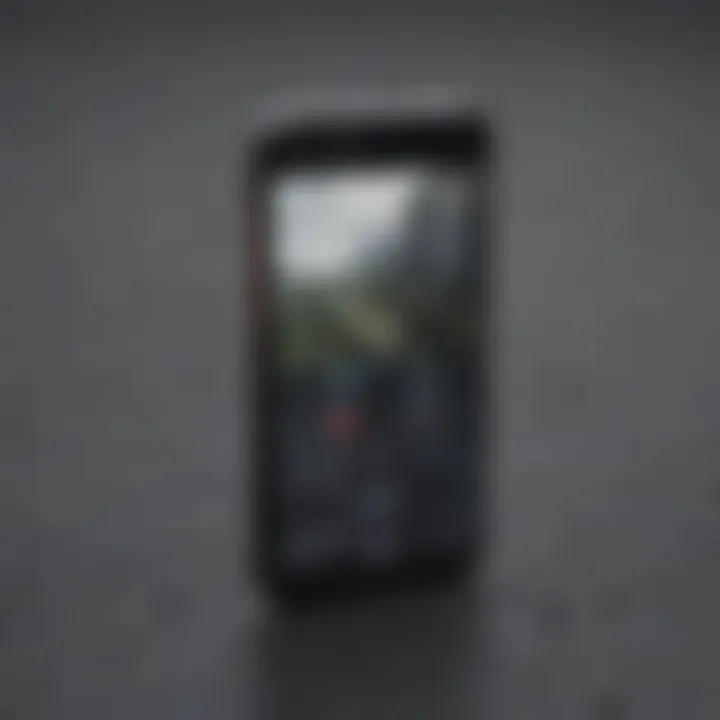
The unique capability of a telephoto lens is its compression of space between the subject and background, which creates a pleasing aesthetic effect. However, lighting can be a challenge, as these lenses often require more light for optimal results.
Macro Lens
The macro lens is essential for detailed close-up shots. It enables users to focus on small subjects, such as flowers or insects, revealing textures and patterns that are often overlooked. The key advantage of this lens is its ability to capture extreme detail.
A unique feature of macro lenses is their ability to achieve high magnification levels for extreme close-ups. The downside is a limited depth of field, which can make it difficult to keep the entire subject in focus at once, often requiring precision in shooting.
Depth Sensor
Depth sensors play an important role in enhancing photographic effects. They accurately gauge the distance between the camera and the subject, allowing for impressive portrait shots with bokeh effects. The key characteristic of a depth sensor is its ability to create a more dimensional look in photographs.
A unique attribute of depth sensors is their contribution to augmented reality applications. However, they may struggle in low-light situations, affecting performance and user experience.
Monochrome Sensor
The monochrome sensor captures black-and-white images, focusing more on light than color. This lens brings out contrasts and textures in a way that colored images sometimes cannot. The key benefit of using a monochrome sensor is providing a classic and artistic quality to photographs.
One unique feature of monochrome sensors is their ability to create detailed and contrast-rich images without the distractions of color. A disadvantage is the limitation in creative use, as it cannot capture video or color images, requiring complementary lenses for full-color photography.
Functional Roles of Each Camera
The collaborative effectiveness of the five types of cameras in modern smartphones showcases how they can fulfill distinct roles for photographers. This flexibility not only enhances the user experience but also makes mobile photography more exciting and accessible. From wide-angle vistas to intricate details captured by macro photos, the five-camera setup is about enabling creativity, efficiency, and greater control over the photographic process.
User Experience and Photography
User experience plays a vital role in the overall function and acceptance of smartphones equipped with multiple cameras. The integration of five-camera setups introduces a new layer of complexity in mobile photography. Therefore, user experience must address how these sophisticated systems fit into everyday photography practices and how they enhance or complicate users' interactions with their devices.
When considering the photographic capabilities of five-camera phones, users often anticipate versatile functionalities. Devices like the Samsung Galaxy S21 Ultra or the Huawei P40 Pro allow users to manipulate different lenses for diverse photographic styles. These capabilities range from wide-angle shots capturing expansive landscapes to telephoto imagery enabling crisp photos at great distances. The ability to switch between various camera types allows users to exercise their creativity with ease. In addition, multiple cameras facilitate seamless transitions between modes, which can help users capture unique moments promptly. This flexibility is crucial in meeting the rapidly evolving demands of modern social media sharing.
However, this evolution in smartphone camera technology may also lead to specific challenges. Users must learn how to utilize each lens effectively to achieve desired results. The inclusion of features such as depth sensors and monochrome sensors offers enhanced options, but it can create an overwhelming experience for those unfamiliar with advanced photography. The interface design must be intuitive and supportive, ensuring that functionalities are accessible yet not cumbersome.
Photographic Capabilities of Five-Camera Phones
Smartphones with five-camera setups offer unique photographic capabilities, evolving the standards for mobile photography. The individual roles of each camera enable a fuller expression of creative potential. Each lens contributes specific advantages that elevate user experience and challenge traditional photography methods.
- Wide-Angle Lens: Permits users to capture more expansive scenes, making it ideal for landscapes or group pictures.
- Telephoto Lens: Enables a closer view of distant subjects without sacrificing detail, important for wildlife photography.
- Macro Lens: Allows for detailed close-up shots, essential for capturing intricate textures or subjects unnoticed by the naked eye.
- Depth Sensor: Enhances portrait photography by providing accurate background blur effects, akin to professional cameras.
- Monochrome Sensor: Captures detailed black-and-white images that can emphasize shapes and light contrasts, providing an artistic touch.
Each camera contributes holistically to the device's capability, making it part of a comprehensive photography tool. Users may utilize these diverse functionalities to create visually compelling stories. However, the challenge remains to ensure that users can harness these capabilities without feeling lost in the myriad of options.
User Preferences and Trends in Mobile Photography
In recent years, user preferences in mobile photography have shifted. As smartphone cameras improve, photography has become a key element in the consumer decision-making process. Users increasingly demand versatility, quality, and ease of use.
Additionally, platforms like Instagram and TikTok shape these preferences, prompting users to adopt certain styles or techniques. As a result, consumers show a preference for smartphones that offer superior low-light performances and advanced editing capabilities. This trend places emphasis on usability. Often, users do not wish to navigate complex settings; instead, they favor automated modes or intelligent scene recognition that enables them to focus on creativity rather than technicalities.
These changing preferences reflect the growing acknowledgment of the smartphone as a primary photography tool, rather than a supplementary one. As smartphone manufacturers respond to these trends, it becomes essential to analyze how emerging features align with user needs and expectations. In this landscape, user experience remains paramount, ensuring that technological advancements enhance rather than detract from the joy of photography.
Comparative Analysis with Competitors
The comparative analysis with competitors serves a critical role in understanding the evolution of smartphones equipped with five cameras. In an environment where innovation dictates success, analyzing key players in the market reveals how their strategies influence user experience and technological advancement. It provides insights into what makes certain smartphone models stand out and how they cater to diverse consumer needs. Moreover, this section will highlight significant elements that affect consumer choices, drawing connections between innovations and market trends.
Market Leaders and Their Innovations
In the multi-camera smartphone segment, several market leaders have carved niches through distinctive innovations. Companies such as Apple, Samsung, and Huawei have led the charge, each introducing unique technological features that enhance user functionality and photography quality.
- Apple: With the introduction of the iPhone 12 Pro Max, Apple showcased the utility of a three-camera system which adapts well into various scenarios. Features like improved night mode and smart HDR create better images in challenging lighting.
- Samsung: The Galaxy S21 Ultra stands out with its comprehensive camera suite that includes a 108 MP wide-angle sensor, two telephoto lenses, and an ultra-wide lens. This model allows for extensive versatility in shooting, addressing different user preferences effectively.
- Huawei: The P40 Pro’s impressive four-camera system integrates AI technology that enhances image processing capabilities. The brand has garnered attention for its ability to deliver high-quality photos, especially in low-light conditions.
These companies leverage not only technical capabilities but also user interface design, which enhances the overall experience of mobile photography.
Consumer Choices: Factors at Play
Understanding consumer choices becomes paramount in the context of multi-camera smartphones. A variety of factors influence why users opt for certain models, including:
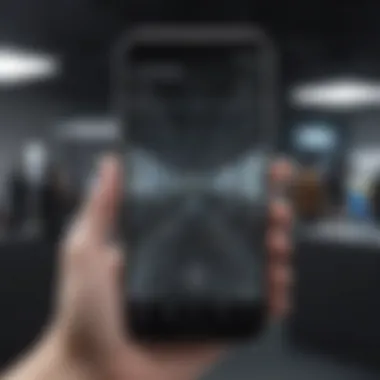
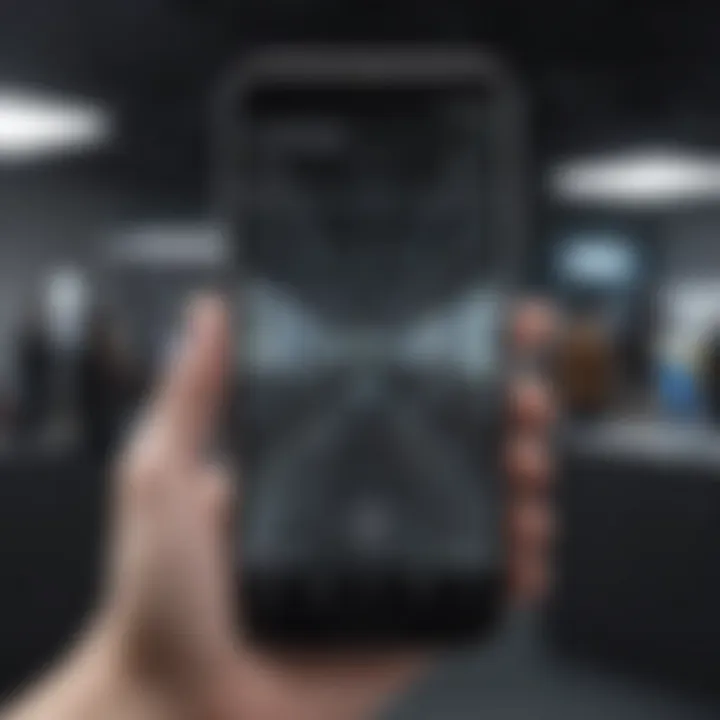
- Image Quality: High-resolution images and versatile shooting modes are often the foremost concerns of consumers.
- Brand Reputation: Established credibility can sway potential customers, making them prioritize brands known for quality and reliability.
- Price Point: The cost of a smartphone often dictates its accessibility. High-end features must align with consumer perceptions of value.
- User Interface: Ease of use in navigating the camera settings plays a vital role. A complex interface may deter some users despite superior camera capabilities.
- Innovative Features: Specialized modes for night photography, portrait shots, or macro photography can appeal to enthusiasts and casual users alike.
"The interplay between user demand and technological capability will define the next steps in smartphone innovation."
This analysis sets the stage for a deeper understanding of the market and how it functions in response to evolving photographic needs.
The Impact of Multi-Camera Phones on the Smartphone Ecosystem
The introduction of multi-camera phones, especially those equipped with five cameras, marks a significant shift in the smartphone ecosystem. These devices not only enhance photographic capabilities but also reshape consumer behavior and industry standards. As smartphones have become essential tools for communication and creativity, the incorporation of advanced camera technology plays a crucial role in attracting consumers.
Market Dynamics and Consumer Expectations
The market dynamics surrounding smartphones with five cameras highlight evolving consumer expectations. Today’s users demand more than just basic functionality; they seek versatility and quality in mobile photography. The presence of multiple cameras allows for various photographic styles, catering to diverse preferences.
This trend has led manufacturers to adopt a more competitive stance, resulting in innovations that push boundaries. For example, brands that once focused solely on single-camera setups now prioritize multi-camera configurations, creating a ripple effect across the industry. It is clear that consumer expectation has driven manufacturers to enhance features significantly.
"The market for smartphones has become both competitive and innovative, driven largely by consumer demand for advanced camera systems."
In this landscape, user feedback shapes how companies develop their products. Features like artificial intelligence in image processing, low-light photography capabilities, and improved zoom functions have become standard benchmarks. Consequently, smartphone users have grown accustomed to high-quality images, necessitating that brands continuously innovate.
Future Trends in Smartphone Photography
As we look to future trends in smartphone photography, the trajectory suggests a continued focus on enhancing camera functionality. Companies are likely to explore further integration of computational photography and machine learning. These technologies can refine image quality and expand the creative possibilities for users.
The evolution of augmented reality (AR) will also influence smartphone cameras. Enhanced AR capabilities could enable users to create interactive content. For instance, merging real-life environments with digital elements could change how users capture and share moments.
Also, sustainability will be an emerging concern in the development of multi-camera phones. Brands may increasingly consider the environmental impact of materials used in production and seek ways to reduce e-waste. This shift reflects a growing awareness among consumers.
In summary, the impact of multi-camera phones on the smartphone ecosystem is profound. They redefine consumer expectations, drive market dynamics, and point toward future photography trends that are likely to enhance user experience and creativity.
Challenges and Limitations
The emergence of smartphones equipped with five cameras brings numerous advantages, but it is also followed by significant challenges and limitations. Understanding these factors is essential for both consumers and manufacturers. The complexities of multi-camera systems can influence user satisfaction and complicate the very experience that these devices aim to enhance. This section outlines the technical limitations these systems face and explores how effectively users adapt to their inherent complexity.
Technical Limitations of Multi-Camera Systems
Multi-camera smartphones aim to offer versatility in photography, yet they are not without their technical shortcomings. One main limitation is the overall size and space available inside the phone.
- Image Quality Variation: Each camera might have different sensor sizes and qualities. This can result in inconsistencies when photos are taken in diverse lighting conditions or settings.
- Processing Power: Integrating multiple cameras can burden the smartphone's processing capabilities. This can lead to lag during photo capture or when switching between cameras.
- Calibration Issues: With multiple lenses, achieving accurate focus and exposure becomes more complicated. Misalignment can affect image output and might require software adjustments.
- Battery Consumption: Utilizing several cameras, especially during extensive use like video recording, can drain battery life more rapidly than single-camera devices.
These technical limitations can affect the user experience negatively, making it essential for manufacturers to continue enhancing hardware and software solutions.
User Adaptation to Complex Interfaces
As smartphones with five cameras offer advanced functionalities, users often encounter interfaces that can be complex. Adapting to these can pose challenges for the average user.
- Learning Curve: Mastering how to use multiple cameras for various photography styles may take time. Users might find it challenging to navigate between the different settings and features.
- Interface Clutter: Too many options on the user interface can confuse users rather than enhance their experience. This may lead to frustration for those who are not technologically inclined.
- Feature Overload: While more features can be advantageous, they can also overwhelm users. Many may not utilize the full potential of a five-camera system, limiting the benefits of the technology.
Users need clear guidance and tutorials to maximize their experience with these features, ensuring they can enjoy the full potential of the device without feeling lost.
Overall, understanding these challenges and limitations is crucial for appreciating the journey of smartphone technology as well as for users who wish to enhance their photography skills efficiently.
The End and Future Directions
The analysis of smartphones with five cameras reveals a significant evolution in mobile photography. As consumer preferences shift towards more versatility and enhanced photo quality, manufacturers are pressed to adapt and innovate. The importance of this topic lies in understanding how these devices meet the intricate demands of users. It helps clarify the trajectory the market is taking and the anticipated developments in smartphone technology.
Summary of Findings
Smartphones with five-camera setups present a multifaceted approach to photography. The primary findings suggest:
- Technological Innovations: The integration of multiple camera types allows users to achieve professional-quality photos with ease.
- User Experience: Enhanced features cater to a broad spectrum of photography needs, reflecting changing consumer trends.
- Market Dynamics: The increasing competition among brands drives continuous improvement in camera capabilities, influencing overall smartphone sales.
- Future Outlook: As technology advances, consumers expect even greater photographic performance, which could lead to further enhancements in camera systems.
This extensive exploration underscores the significance of multi-camera systems and how they shape both user experiences and market trends.
Predictions for the Next Generation of Smartphones
Looking ahead, the next generation of smartphones is likely to witness several key shifts, including:
- Enhanced AI Integration: Artificial intelligence will play a crucial role in camera functionality, improving image processing and helping users optimize shots.
- Greater Variety of Cameras: We may see even more specialized cameras being introduced, such as advanced low-light sensors and cameras with artificial bokeh effects.
- User-Centric Designs: Future devices might prioritize user interface enhancements to simplify interactions, allowing more accessibility to complex camera features.
- Sustainability in Production: An increasing focus on environmentally friendly materials and manufacturing processes may reshape how these devices are designed and manufactured.
The evolution of multi-camera smartphones is still in its early stages. As technology continues to progress, potential enhancements are abundant. It is vital for manufacturers to keep pace with consumer demands and stay ahead of market trends to maintain their competitive advantage.



